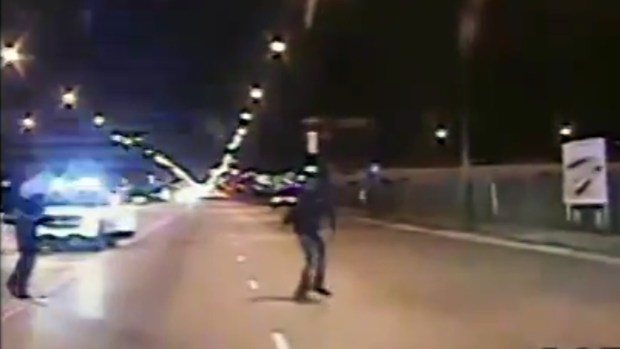Under one of the few significant mandates of the controversial 2021 SAFE-T Act that was backed by both advocates for police reform and law enforcement, every police officer in Illinois as of New Year’s Day is required to wear a body camera while on duty.
Police departments are required to report their use of bodycams, but whether all of the state’s roughly 1,000 law enforcement agencies were in compliance with the law, which gave smaller departments and state agencies more time to get equipped with the technology, remained unclear at the Jan. 1 deadline.
The most recent report from the Illinois Law Enforcement Training and Standards Board is from 2023, before many small departments were required to comply, and falls short of giving a full picture. Only about 180 departments provided information about body cameras to the ILETSB. Of the roughly 170 departments from that group which reported using cameras in 2023, 20 didn’t explain their review process for camera footage and 15 failed to report how many cameras they had on hand, according to the 2023 report. Another 25 were missing the numbers of officers in the department using body-worn cameras. All three elements are required to be reported under the law.
Departments that failed to provide full information contacted by the Tribune shared the number of cameras in use and said they were in compliance with the law. Arlington Heights Deputy Chief Greg Czernecki said his department submits reports to the ILETSB “so I am not sure why the information regarding the number of cameras and officers using the cameras was not included in the report.”
Some departments reported to the ILETSB that they had far fewer cameras than officers. Agencies contacted by the Tribune said they had worked out a checkout system or otherwise found a way to be in compliance with fewer cameras.
Updated information on body camera programs likely won’t be collected until this summer, as law enforcement agencies are required to provide reports about body camera use by May 1 annually, and the ILETSB must analyze those reports by the end of July, according to the law.
Kenny Winslow, executive director at the Illinois Association of Chiefs of Police, said he thinks most departments are in compliance with the law, though some departments struggled with funding issues and manufacturing delays. There are “probably a couple” of departments that have been unable to comply, he said.
Police body cameras have become more common over the last decade as pressure increased to improve transparency and trust in light of controversial uses of force by officers across the nation, especially in situations where video contradicted the official version of events. That was the case in the fatal shooting of Laquan McDonald by Chicago police Officer Jason Van Dyke in October 2014, when police dash camera footage, released more than a year later, provided a scenario contrary to the narrative officers on the scene provided to investigators.
In an image taken from dashcam video provided by the Chicago Police Department, Laquan McDonald, right, walks down the street moments before being fatally shot.
Chicago police began a body camera pilot program several months after a white police officer in Ferguson, Missouri, fatally shot Michael Brown, an unarmed Black man, in 2014, sparking riots and generating national outrage. Chicago’s program began with one patrol district, and had been expanded to include all officers assigned to patrol districts by the end of 2017.
After the murder of George Floyd by a Minnesota police officer in 2020, the Illinois Legislative Black Caucus advanced sweeping criminal justice reforms known as the SAFE-T Act. The act eliminated cash bail, made it easier for the public to file complaints against law enforcement and required all police officers in the state to be equipped with body cameras by Jan. 1, 2025.
The largest departments for municipalities and counties with more than 500,000 people needed to be in compliance by 2022, while midsize departments had deadlines in 2023 and 2024. The final deadline of Jan. 1 was for departments serving jurisdictions with fewer than 50,000 people, as well as state agency law enforcement.
While the SAFE-T Act was criticized by many in law enforcement, the body camera requirement met with general approval. Criminal justice advocates see the devices as crucial tools for protecting civil rights and holding officers accountable. Many in law enforcement view bodycams as another means of gathering evidence as well as a way to protect officers against unfounded accusations of misconduct.
Bartlett police Chief Geoffrey Pretkelis, whose northwest suburban department has a little more than 60 sworn police officers for a town of about 40,000 people, said his department has used body cameras for more than two years.
“We don’t get a lot of complaints. But the few complaints that we have, have been able to be really resolved with the body-worn cameras, which we might have had some difficulty if we didn’t have those particular cameras,” Pretkelis said.
Chris Beachler, police chief of Glasford, a central Illinois town of about 1,000 people, said his department of four or five officers started using body cameras about 10 years ago. The cost of purchasing and maintaining cameras and storing electronic footage is an issue for many departments. Beachler said his department’s six body cameras and accompanying storage cost the small town around $18,000.
But the state has set aside millions of dollars in grants for police departments wanting body or squad car cameras. About 325 agencies had received some kind of camera grant from the ILETSB as of last August, Executive Director Keith Calloway said in an email.
Agencies that comply within the law’s timeline are set to receive preference in camera grant funding from the ILETSB, according to the statute. Separately, the Illinois criminal code notes that individual officers who don’t comply with certain sections of the law on camera use are engaging in misconduct, a Class 3 felony.
The Effingham County sheriff’s office didn’t get body cameras until 2024 because it was testing different brands and trying to figure out how it was going to store footage, said Sheriff Paul F. Kuhns. The agency has about 30 officers, including those who work in corrections.
Kuhns said one added element was the potential cost to departments for having employees spend time fulfilling open-records requests on anything related to the cameras.
“We are so used to unfunded mandates. They pass a law, we have to have certain training. And I’m all for training. We have smarter, better officers now than we’ve ever had in our country’s history,” Kuhns said. “But all that stuff comes at a cost and oftentimes it’s just the only thing they do is demand that it be done, and then we’re left struggling to figure out how to pay for it.”
Axon, a main supplier of body cameras to law enforcement agencies in Illinois and around the country, said the company has had no problem meeting customer demands for equipment.
“We are confident that our supplier network and manufacturing capabilities can reliably meet customer needs, including providing body-worn cameras for Illinois agencies,” an Axon spokesperson said.
Several department leaders who were included in the Illinois Law Enforcement Training and Standards Board 2023 report said bringing in the cameras had been helpful for training, public trust and media questions while a few said the sheer amount of data generated by the cameras posed a new challenge.
“It does create a significant workload,” including in Freedom of Information Act requests for videos that might require a lot of redactions, Lake County Sheriff’s Office Deputy Chief Christopher Covelli said.
Still, he said, “the overall good outweighs that.”




